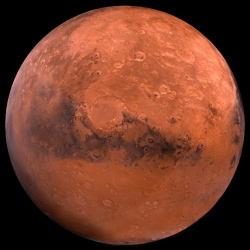
The team responsible for the Sample Analysis at Mars instrument suite on NASA’s Curiosity rover has made the first definitive detection of organic molecules at Mars, but there’s not enough evidence to tell if the matter came from ancient Martian life or from a non-biological process, such as interplanetary dust or fragments of asteroids and comets.
The surface of Mars is currently inhospitable to life as we know it, but there is evidence that it once had a climate that could have supported life billions of years ago.
The organic molecules found by the team were in a drilled sample of the Sheepbed mudstone in Gale crater, the landing site for the Curiosity rover. Scientists think the crater was once the site of a lake billions of years ago, and rocks like mudstone formed from sediment in the lake.
Moreover, this mudstone was found to contain 20 percent smectite clays. On Earth, such clays are known to provide high surface area and optimal interlayer sites for the concentration and preservation of organic compounds when rapidly deposited under reducing chemical conditions.
While the team can’t conclude that there was life at Gale crater, the discovery shows that the ancient environment offered a supply of reduced organic molecules for use as building blocks for life and an energy source for life. Curiosity’s earlier analysis of this same mudstone revealed that the environment offered water and chemical elements essential for life and a different chemical energy source.
“We think life began on Earth around 3.8 billion years ago, and our result shows that places on Mars had the same conditions at that time, liquid water, a warm environment, and organic matter,” said Caroline Freissinet of NASA’s Goddard Space Flight Center in Greenbelt, Maryland.
“So if life emerged on Earth in these conditions, why not on Mars as well?” Freissinet is lead author of a paper on this research submitted to the Journal of Geophysical Research-Planets.
